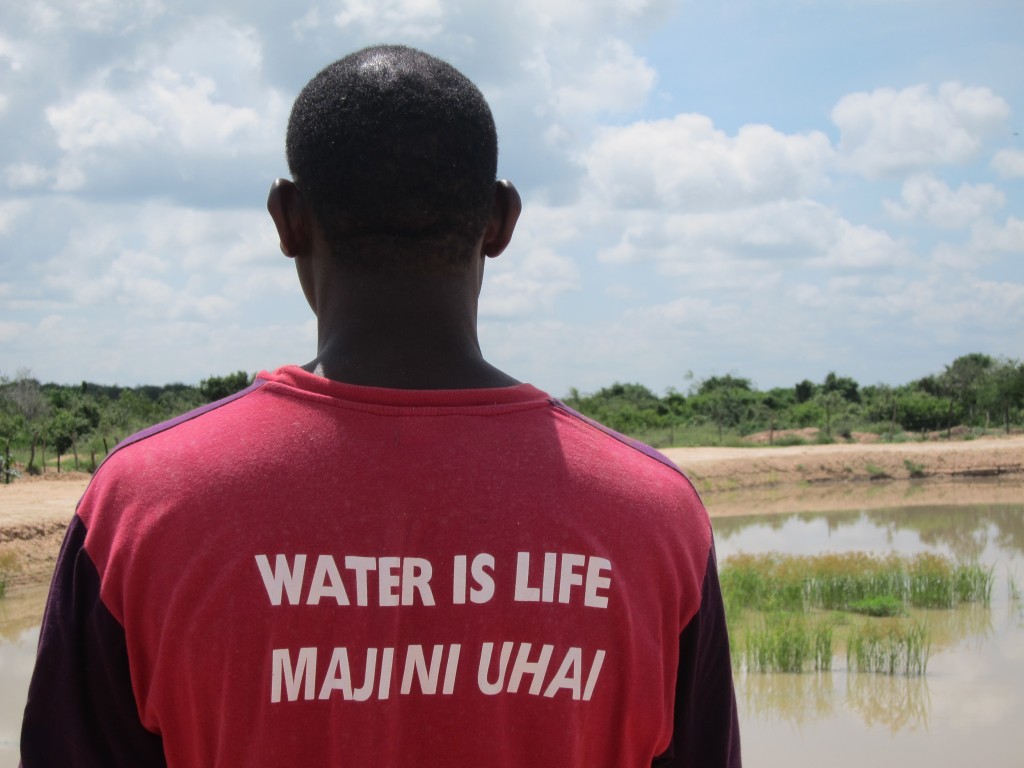 There are many experiences that have had a significant impact on us during these past ten weeks, but what has touched us the most is the severity of the drought and the consequent distances that people must travel in order to obtain water for their daily consumption and use.
There are many experiences that have had a significant impact on us during these past ten weeks, but what has touched us the most is the severity of the drought and the consequent distances that people must travel in order to obtain water for their daily consumption and use.
While there is adequate water in the cities and towns that are served by water systems, the people we serve either live in very small rural villages or are scattered across the countryside. For them, water is a scarcity! River beds are dry and the few water lines that reach some of these areas provide a minimal and sporadic water supply. This water must be bought with shillings (the local currency), which are scarce and needed for other basic necessities.
Numerous efforts have been made over the years to provide these people with a reliable source of water. We have seen water tanks in various communities but they are small and often empty; attempts at boreholes (deep wells) in this area have produced water that is too salty for human and livestock consumption; and there is an absence of seasonal rivers in which sand dams could be constructed (effective in some parts of Kenya). We are told that the best solution for the three counties where we work is to construct water pans. As a result, our Food for Asset project is zeroing in on their construction (or rehabilitation) in exchange for beneficiaries receiving their monthly allocation of food.
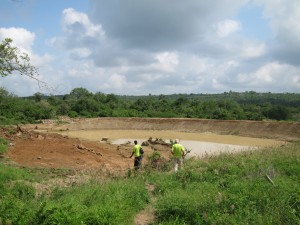 What is a water pan? By means of both this week and next week’s blog we hope to give you some insights into what is involved in constructing a water pan – from early stages of a basic water pan to a more sophisticated project that one community is working on. To picture a water pan, think of a very large pond – basically a large surface-water storage structure. A water pan is strategically located across a natural drainage channel so that, during both the ‘short rains’ (October/November) and the ‘long rains’ (March/April), surface water will flow into it. In some locations, where a small river is nearby, the water flow can be diverted into the water pan to fill it up, and then continue its course again downstream. Since it is not artificially lined, another important consideration in site selection is a location with impervious soil – to prevent seepage.
What is a water pan? By means of both this week and next week’s blog we hope to give you some insights into what is involved in constructing a water pan – from early stages of a basic water pan to a more sophisticated project that one community is working on. To picture a water pan, think of a very large pond – basically a large surface-water storage structure. A water pan is strategically located across a natural drainage channel so that, during both the ‘short rains’ (October/November) and the ‘long rains’ (March/April), surface water will flow into it. In some locations, where a small river is nearby, the water flow can be diverted into the water pan to fill it up, and then continue its course again downstream. Since it is not artificially lined, another important consideration in site selection is a location with impervious soil – to prevent seepage.
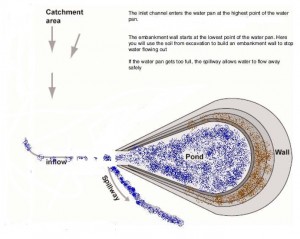 In these communities, the water pan is excavated manually. Ideally the pan is excavated to a depth of nine to ten feet. With the exception of the first foot of soil, which is not suitable for compaction, the excavated soil is used to build an embankment around the pan to provide extra storage capacity. The embankments around the pan are quite wide and strong in order to contain the water. There is also a spillway or diversion to allow excess water to escape, preventing the embankments from being breached. We have enclosed a drawing that will help depict what we have been attempting to describe.
In these communities, the water pan is excavated manually. Ideally the pan is excavated to a depth of nine to ten feet. With the exception of the first foot of soil, which is not suitable for compaction, the excavated soil is used to build an embankment around the pan to provide extra storage capacity. The embankments around the pan are quite wide and strong in order to contain the water. There is also a spillway or diversion to allow excess water to escape, preventing the embankments from being breached. We have enclosed a drawing that will help depict what we have been attempting to describe.
In exchange for one month’s supply of food, beneficiaries are required to perform ten days of labour. One day’s labour consists of either:
- excavating and removing an area of dirt that is two metres by two metres by one foot deep (don’t ask why 2 different systems of measure are used!), or
- ‘ramming’ (compacting) a cubic metre of soil that is deposited on the embankments.
While some exceptions are made for a limited number of households, the vast majority of beneficiaries meet this commitment each month in order to remain on the beneficiary list.
Some of the water pans are new, while others are existing ones requiring significant rehabilitation or expansion. Although there are 17 ‘main’ water pans being worked on, which are associated with our 17 food distribution locations, there are an additional 32 pans which are being worked on. The reason for this is the extreme distances that some people would have to walk (in excess of 3 or 4 hours one way) if they were only to work on the 17 ‘main’ locations.
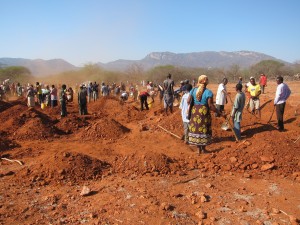 We have enclosed a number of pictures which show some of the initial clearing, excavation, and construction at some of the sites we have visited. Next week we will share some more information and stories about the water pans and the people working at them.
We have enclosed a number of pictures which show some of the initial clearing, excavation, and construction at some of the sites we have visited. Next week we will share some more information and stories about the water pans and the people working at them.
As we conclude, we once again want to thank everyone who has either commented on our blog or sent us an email! We are amazed at how much your comments, your encouragement, and your interest in our project means to us…and how much we depend on them! Thank you!
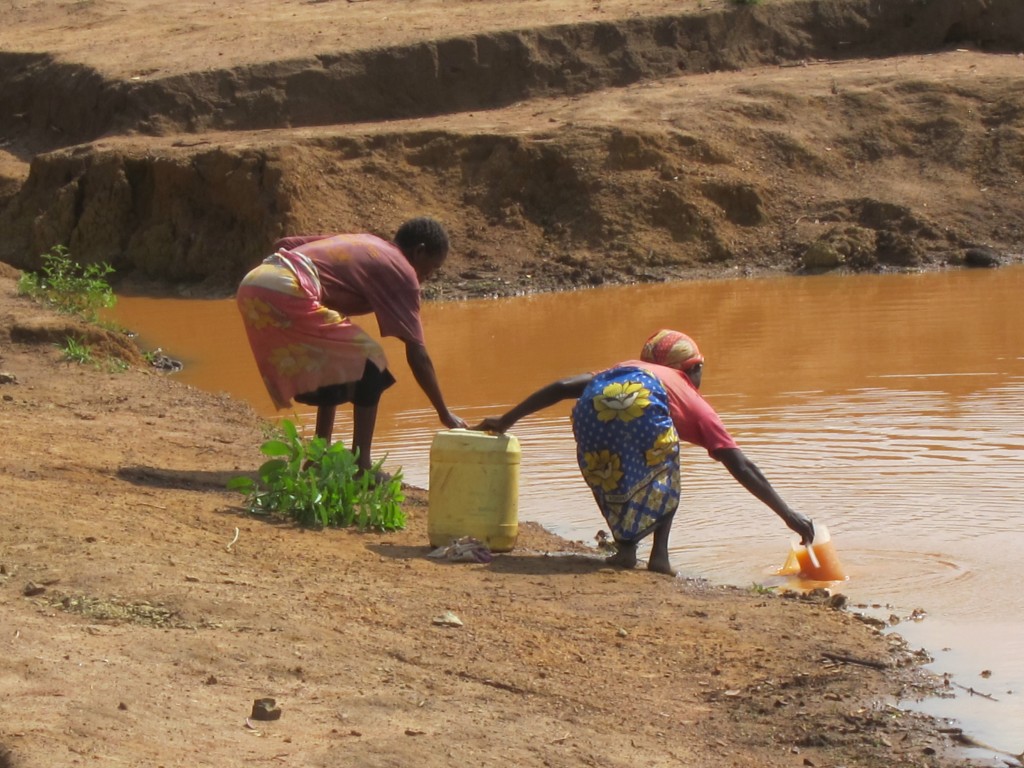


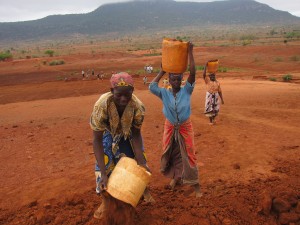
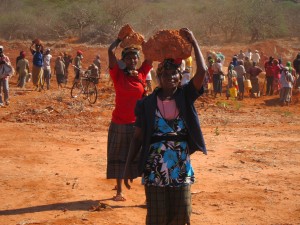
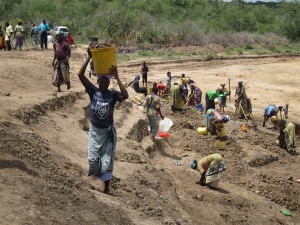
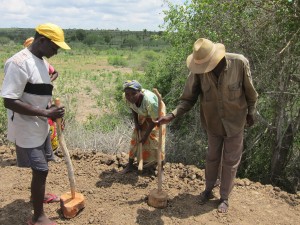

What you are doing is amazing and real. I hope you are both doing well and know your efforts are meaningful to all those you have chosen to help. You are very special people.
All my thoughts are with you.
Take care if your selves.
Hi Harry and Annie- thanks for this update- and isn’t it true- a picture is worth a thousand words! Beautiful people, how colorful the clothes and great to see a plan in action! And it’s good to see that there is at least some water in the pans. There was some rain recently? Questions- Once the water is collected and brought home does it need to be boiled to get rid of contaminants? How hot is it there usually? (people are asking me when I tell them what you guys are doing ). So keep up the good work- I pray for you continually. Looking forward to the next blog… ada
Water is so precious here in Arizona, also. We see the dry landscape and the canal system that has been built and maintained since the early 1300s. What a difference in Africa – what hard work it is to build and maintain these water pans. But results of enough water for crops will be the encouragement for the Kenyans. Praying for you both each day – especially as you are on the road and that affects you, Annie. God go with you. Love Mary
Thanks for another very interesting and informative blog. Wow..the work involved to get water is inconceivable to me. I look at the pics and the hard work and can only imagine how hard that is in the heat. Continue to pray for you and the work you are doing. Annie..hopefully the travel time is easier for you then it has been. Love Jane
Keep up the good work- it’s wonderful to hear your updates. Love you guys!
Tracy
Seeing how the water pans are constructed and how they are meant to work is SO helpful. The people in Kenya are hard working individuals, especially when their purpose will meet such a need. My heart goes out to them and their little ones. Thanking God for people like yourselves, Annie and Harrie, who are stepping out of their comfort zones to be involved to make a difference. Praying for your continued safety and health.
And to think of all the water we use to water our lawns just so it looks nice.
I will look at things different the next l time on turn on a tap and have instant running water..an other thing we take for granted.. enjoy your blogs keep them comming..
Bill
Oh wow, Harry and Annie, what an interesting article. I somehow feel so humbled and blessed with our undeserved rich resources. Water here is almost taken for granted, at a flick of my wrist, I have it in abundance. But these people need to work for it, really work for it. I praise God, that you are using your combined gifts to help and encourage these people. I am humbled by your commitment, and proud to be your friends. You have really highlighted the plight of these people, and made their situation clear to somemany people via your blog. God continue to strengthen you!